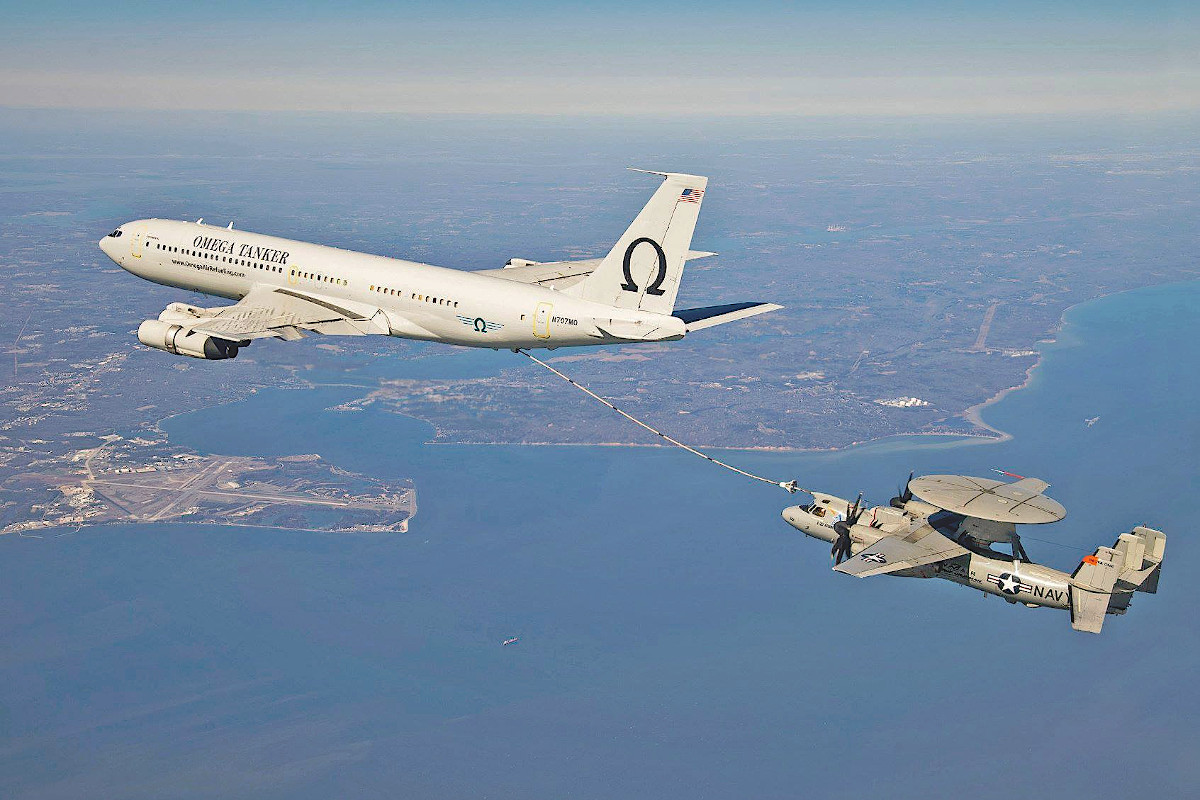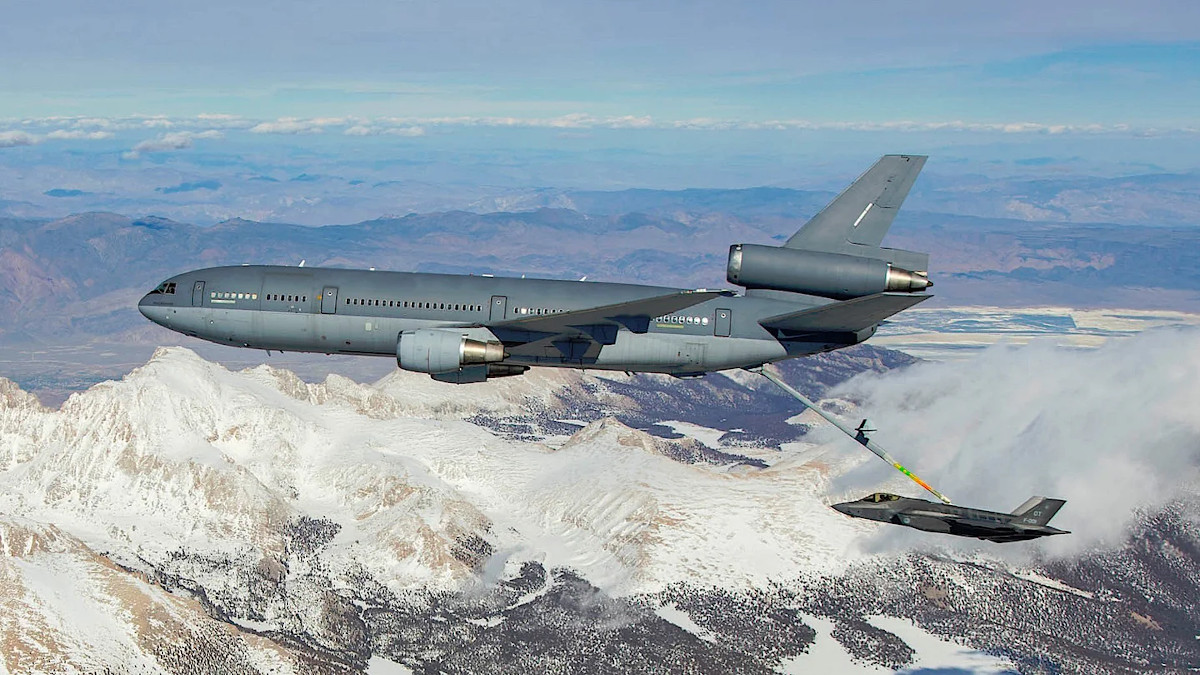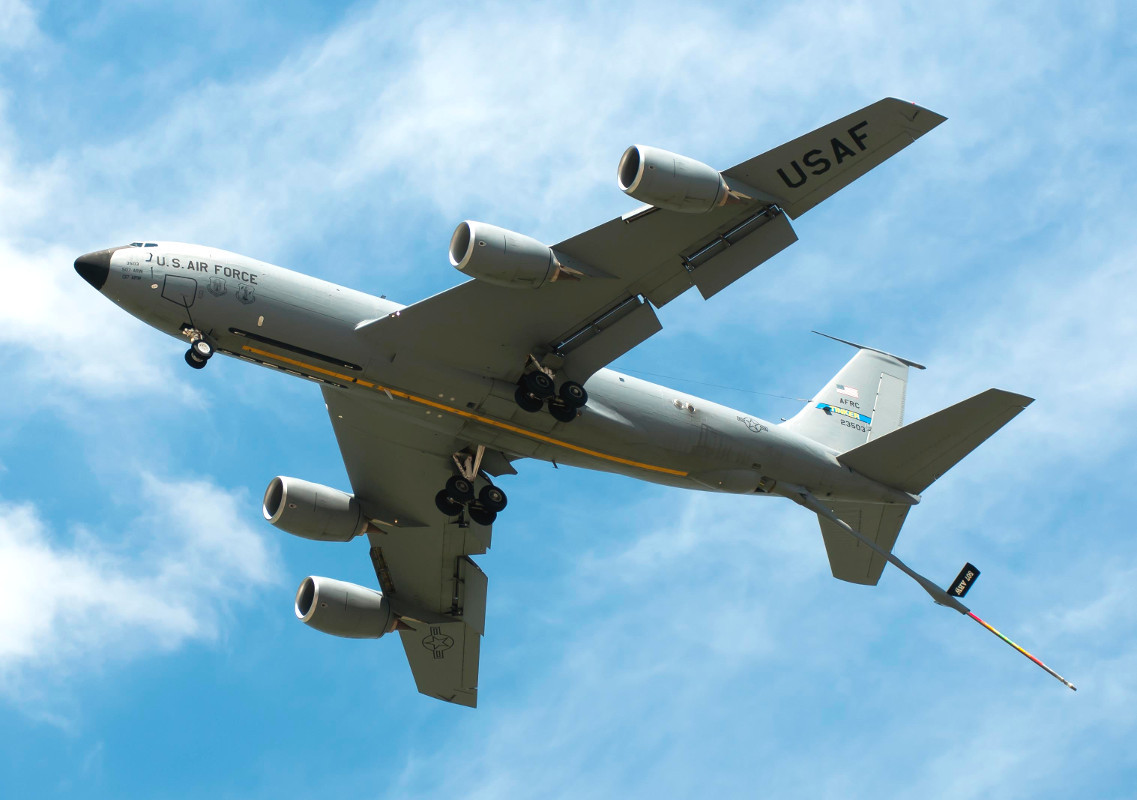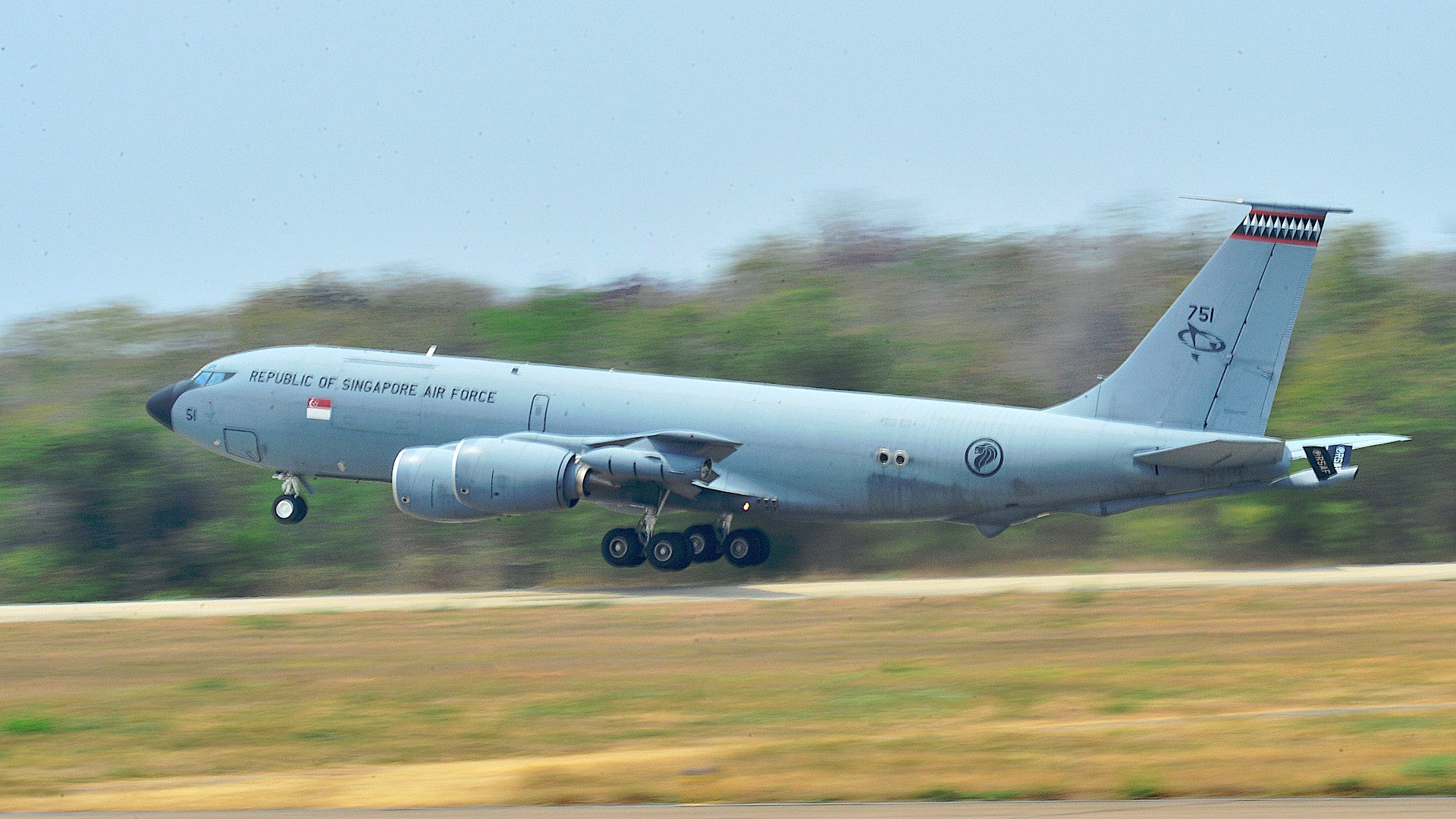Pictures have emerged of an ex-Republic of Singapore Air Force KC-135R Stratotanker carrying the U.S. civil registration code N573MA and the nickname “Timothy Dalton,” almost certainly a reference to the British actor who played James Bond, among other roles. Reports suggest that private aerial refueling company Omega Air Refueling has bought this aircraft, as well as three others that Singapore retired last year. The sale comes as the U.S. Air Force is actively exploring multiple potential plans to hire contractors to provide badly needed aerial refueling support for non-combat activities.
Photographer Hans Jacobs caught N573MA reportedly leaving Singapore’s Changi International Airport for the last time on Sept. 29, 2020. The aircraft had been stripped of its Republic of Singapore Air Force (RSAF) markings and had a very worn gray paint job. In addition to “Timothy Dalton” written in black under the left side of the cockpit windscreen and the U.S. civil registration code on the side the rear fuselage, an American flag had also been painted on the tail and the word “experimental” appeared above the main crew door on the left side of the forward fuselage.
Experimental in this case refers to a special type of airworthiness certificate from the FAA. It can apply to aircraft in a number of diverse categories beyond those in use for pure research and development purposes.
This particular KC-135R also notably still carries its underwing probe-and-drogue refueling pods, as well as its rear refueling boom.
Scramble was among the first to notice the appearance of all four ex-RSAF KC-135Rs, which are now registered N569MA, N571MA, and N572MA, on the U.S. civil register just last week. FAA’s online records show the registrant for N572MA and N573MA as “Wilmington Trust Co Trustee,” with an address in Wilmington, Delaware. The entries for N569MA and N571MA show that formal approval of their registrations is still pending.
An Instagram account with the handle singaporean_aviation also posted a picture of N573MA on Sept. 29, saying that the aircraft was headed to join Omega Air’s fleet. The War Zone has already reached out to the Texas-based contractor to try to confirm whether or not this is the case.

The RSAF had purchased these four aircraft in 1996 from among those the U.S. military had in storage at the Bone Yard at Davis-Monthan Air Force Base in Arizona. They were subsequently upgraded from KC-135As to the KC-135Rs, which included re-engining them with CFM International CFM56 turbofans. The also received the Pacer CRAG (Compass, Radar, And GPS) avionics upgrade originally developed for the U.S. Air Force.
The Singaporeans retired all four of these KC-135Rs last year following the acquisition of an equal number of Airbus A330 Multi-Role Tanker Transport (MRTT) aircraft. In July 2019, Defense News reported that at least one unnamed private company had expressed interest in buying the four Stratotankers. An April 2020 report the Air Force submitted to Congress also said that “one, and possibly two, commercial air refueling operators are in the process of acquiring used boom-equipped air refueling aircraft from a foreign government.”

The basic idea of contracted aerial refueling services for non-combat activities is not new, with Omega Air notably having provided this kind of support to the U.S. Navy since 2001. However, up until very recently all of Omega’s private tanker fleet is configured with probe-and-drogue style refueling systems, the method that the Navy, as well as the U.S. Marine Corps and a large number of foreign countries, utilize.
The U.S. Air Force, among others around the world, use the boom refueling method. Omega Air only acquired its first boom-equipped KDC-10 tanker, similar to the Air Force’s KC-10A Extender, which previously served with the Royal Netherlands Air Force, last year, making it the first company to be able to refuel aircraft in flight in this way.

Omega would certainly be a company with an interest in acquiring the KC-135Rs to expand its boom-equipped tanker fleet. For years now, the Air Force, on behalf of U.S. Transportation Command (TRANSCOM), has been exploring potential courses of action to greatly expand the use of contractor-operated tankers across the U.S. military, which you can read about in more detail in this past War Zone piece.
One of five potential options the Air Force examined was hiring contractors who would acquire surplus tankers from foreign sources. Aircraft that countries had acquired via the U.S. Foreign Military Sales (FMS) program, such as the ex-RSAF KC-135Rs, have the additional benefit of having been built to U.S. military specifications and certified for use with U.S. aircraft by the Air Force in the past already.
However, one potential concern with this plan is that KC-135Rs supplied to American allies and partners via FMS use what is called the “FMS boom.” This is a Boeing proprietary design that has only approximately 75 percent parts commonality with the “USAF High Speed Boom” found on Air Force Stratotankers. The remaining 25 percent of the parts that are not interchangeable between the two boom types and are also no longer in production, which could present sustainment issues in the future.

Even if there is an issue with the boom in the long run, the ex-RSAF KC-135Rs also have the probe-and-drogue refueling pods, increasing their versatility. Beyond that, Omega Air has already become proficient at keeping old and tough to sustain fleets airborne and working hard day in and day out via their existing Boeing 707 tanker program. With TRANSCOM, through the Air Force, looking at hiring contractors to provide thousands of flight hours of aerial refueling support each year across the entire U.S. military, there is only added incentive on the part of companies, such as Omega, to solve any sustainability problems.

This demand for aerial refueling services within the U.S. military may increase further in the coming years as the Air Force looks to retire a number of KC-135R and KC-10A tankers and future contracts are likely to be highly lucrative. As a result, competition for those deals is likely to be heated and the industry is already growing. In 2018, Lockheed and Airbus notably announced their own plans to team up to provide aerial refueling support using both contractor-owned-and-operated tankers and leased aircraft, including examples of the latter company’s increasingly popular A330 MRTT.
If true, Omega’s decision to buy the former RSAF KC-135Rs would make good sense and help give it a leg up on potential competitors.
Contact the author: joe@thedrive.com
